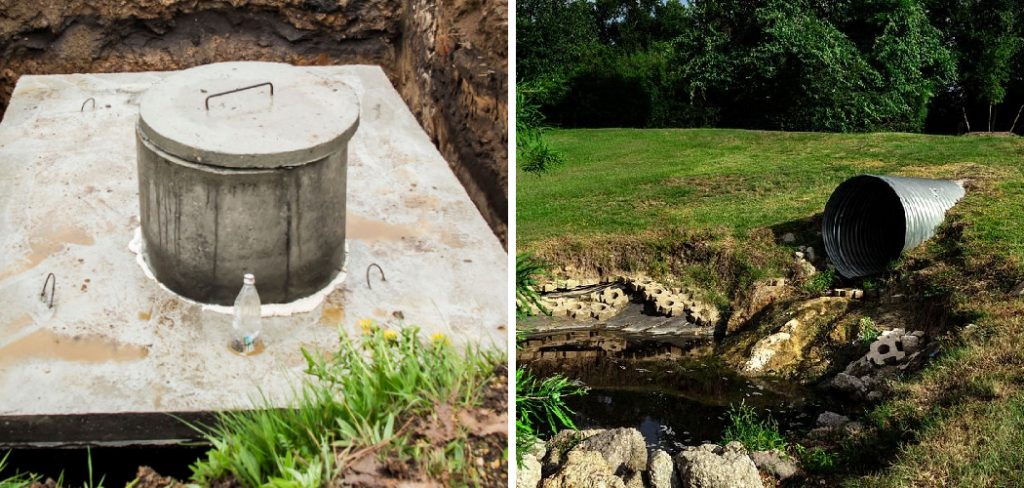As a homeowner, it’s important to know how to fix things when they go wrong. If your home is not connected to a municipal sewer system, you depend on a septic tank to dispose of your household waste. If the septic tank gets backed up, it can cause serious problems!

In this blog post, we’re going to show you how to fix backed up septic tank. Follow these simple steps to get your system up and running again. Pumping the tank is the most important step, so do that regularly! And if all else fails, call a professional for help.
Summary: If you have a backed-up septic tank, some simple steps can help get your system running again. Start by checking the pipe from your home to the tank. Clear any debris and check for clogs that may be causing a blockage.
Ensure all vents are clear and check for collapsed pipes or problems in the tank itself. If these don’t solve the issue, you may need to call in a professional plumber to inspect the tank and make repairs.
What Causes Backed-up Septic Tank?
Many things can cause a septic tank to back up. Some of the most common causes include:
- Excess water in the tank from heavy rains or flooding
- Too many solids in the tank from too much waste being put into it
- Tree roots growing into and clogging the leach field lines
- Bacteria or other organisms growing in the tank and blocking the outlets
10 Effective Steps on How to Fix Backed Up Septic Tank
Step 1: Stop All Water Use in the House
If you have a septic tank, you’re not on city sewer lines. That means all the water used in your house flows through your septic system. So, the first step to fixing a backed-up septic tank is to stop using all water in your home. This includes all plumbing fixtures, such as toilets, sinks, showers, and washing machines.
Step 2: Find the Septic Tank
The next step is to find your septic tank. This may seem like a no-brainer, but if you’ve never had to deal with your septic system before, you may not know where it is. The easiest way to find your septic tank is to look for the cleanout. The cleanout is a pipe that leads from your house to the septic tank. It should be clearly labeled, and it will likely be located near your house’s main sewer line.

If you can’t find the cleanout, or if you’re not sure where it is, you can also locate your septic tank by looking for the maintenance hole. The maintenance hole is a concrete or metal cover that gives access to the septic tank. It should be found in your yard, and it will likely be surrounded by grass or other vegetation.
Step 3: Pump Out the Septic Tank
Once you’ve located the septic tank, the next step is to pump out the tank. This can be done with a rented sewage pump, or you can hire a professional septic company to do it for you. Pumping out the septic tank will remove all of the solid waste that has built up in the tank.
Step 4: Clean the Septic Tank
After the septic tank has been pumped out, it’s time to clean it. This can be done with a pressure washer, or you can hire a professional septic company to do it for you. Pressure washing will remove any remaining waste and sludge from the septic tank.
Step 5: Repair or Replace the Septic Tank
Once the septic tank is clean, it’s time to repair or replace damaged parts. If the septic tank is made of concrete, it may need to be resealed. If the septic tank is made of metal, it may need to be replaced.
Step 6: Inspect the Septic Drainfield
After the septic tank is repaired or replaced, the next step is to inspect the septic drain field. The drain field is a series of perforated pipes that allow treated sewage water to leach into the ground. If the drain field is clogged, it will need to be cleaned or replaced.

Step 7: Repair or Replace the Septic Drainfield
If the septic drain field is damaged, it will need to be repaired or replaced. This can be a costly and time-consuming process, so it’s important to make sure that the drain field is indeed damaged before taking this step.
Step 8: Install a Septic Tank Riser
A septic tank riser is a pipe that extends from the septic tank to the ground surface. Installing a septic tank riser will make it easier to pump out the septic tank in the future. Ensure the riser is made of PVC or other durable material. Ensure the riser is the correct size for your septic tank.
Step 9: Install a Septic Tank Lid
A septic tank lid is a concrete or metal cover that seals the top of the septic tank. Installing a septic tank lid will help to keep rainwater and debris out of the septic tank. You can go for a heavy-duty lid made of concrete or metal.
Step 10: Have the Septic System Inspected Regularly
It’s important to have your septic system inspected by a professional every three to five years. This will help to ensure that the system is functioning properly and that any problems are caught early. Be careful with the chemicals you put down the drain, as some can damage your septic system.
By following these steps, you can fix a backed-up septic tank and keep your home’s sewage system running smoothly. If you have any questions or concerns, contact a professional septic company for assistance.
How to Avoid a Backed Up Septic Tank?
There are a few things you can do to avoid a backed-up septic tank, including:

- Pump your septic tank regularly. This is one of the most important things you can do to prevent a backup. Your septic tank should be pumped every three to five years or as often as recommended by your professional septic service.
- Don’t overload your septic system. Too much water can cause your septic system to overload and back up. Be mindful of how much water you’re using, especially during periods of high usage (like when hosting a large party).
- Fix leaks promptly. A small leak can quickly become a big problem if it’s not fixed promptly. Make sure to fix any leaks in your home, including plumbing fixtures, faucets, and pipes.
- Don’t flush anything other than human waste and toilet paper. Flushing things like paper towels, diapers, feminine hygiene products, and cigarette butts can cause a backup.
Safety Precautions You Need to Know Before Fixing Backed Up Septic Tank
- Never enter a septic tank without the proper safety gear.
- Always have someone else present when working on a septic tank.
- Be aware of the gases that can build up in a septic tank.
- Never try to fix a septic tank yourself if you are not trained.
- Always call a professional septic tank service if you have problems with your septic tank.
- Never use chemicals to try to fix a backed-up septic tank.
- Be sure to have the proper permits and licenses before beginning any work on a septic tank.
- Always follow the manufacturer’s instructions when working on a septic tank.
- Never store flammable liquids near a septic tank.
- Ensure insurance coverage before beginning work on a septic tank.
- Be aware of the local, state, and federal regulations regarding septic tanks.
What Are the Signs That Your Septic Tank is Full?
If your septic tank is complete, you may notice some of the following signs:
- If it takes longer than usual for the water to drain from your sinks, tubs, or toilets, it could be a sign that your septic tank is full.
- A full septic tank can also cause sewage to back into your home, resulting in foul odors and possible health hazards.
- Another sign that your septic tank is full is if you notice water pooling around the tank or in your yard.
If you notice any of these signs, you must call a professional septic tank service to have the tank pumped. Allowing your septic tank to become too full can result in serious damage to the system and may even require replacement.

How Can You Prevent Your Septic Tank From Getting Full?
There are a few things you can do to help prevent your septic tank from getting full:
- Have your septic tank pumped regularly. Depending on the size of your tank and the number of people in your household, you may need to have it pumped every 1-3 years.
- Use water efficiently. Don’t let the water run while brushing your teeth or doing laundry.
- Dispose of solid waste properly. Don’t flush things like sanitary napkins, diapers, or paper towels down the toilet.
- Use septic-safe cleaning products. Many household cleaners can damage your septic system. Look for products that are labeled “septic safe” to be safe.
- Have your septic system checked regularly. It’s a good idea to have a professional check your septic system at least once a year to ensure it’s working properly.
Conclusion
If you follow these steps on how to fix backed up septic tank, you can help prevent your septic tank from getting full and needing to be pumped. However, even if you do everything right, there may come a time when your septic tank needs to be pumped.
If you notice any signs that your septic tank is full, don’t hesitate to call a professional service. Allowing your septic tank to become too full can result in serious damage to your system.
